Calculation and Prediction of Crushing Process of Al–Mg–Si Alloy Thin-Walled Components
Abstract
:1. Introduction
2. Materials and Methods
3. Results and Discussion
3.1. Typical Crushing Process
- (I)
- Elastic stage: the elastic stage is the initial stage of the crushing test. When the crushing test begins, the crushing force rises in a straight line until the peak load is reached. As indicated by the section morphology, the elastic deformation of the specimen mainly occurs in this stage. In the final stage, slight plastic deformation occurs and the specimen begins to form a plastic hinge [23,24]. Since the elasticity of the sample is related to the elasticity of the material and its structure, the length of the elastic stage varies with the elastic limit of the alloy. In this study, the length of the elastic section was about 1.23–1.65 mm.
- (II)
- Bending stage: after the plastic deformation begins, the plastic hinge is formed and starts to bend. Because of the existence of the plastic hinge, the compression force of axial deformation changes to axial crushing torque. Due to the effect of the lever, the length of the moment arm gradually increases during the pressing process, and the crushing force begins to decrease significantly. Until the outward protruding plastic hinge (A-A section) and the inward depressed plastic hinge (B-B) begin to make contact with each other, the bending is blocked. The crushing torque cannot make the plastic hinge continue to deform, and the crushing force reaches the first valley value. From Figure 5, we can see that there is no significant relationship between the first valley value and yield strength. All valleys are around 30 mm.
- (III)
- Compaction stage: this is the process in which two adjacent plastic hinges transition from contact to compaction. In the compaction stage, the crushing force begins to rise again. When both plastic hinges are completely compacted, the crushing force reaches the second peak. At this time, due to the constraint of the structure, the second plastic hinge has been formed, and the crushing torque starts to work again. However, the second peak force is much smaller. The second peak displacement is about 54 mm, and it is also stable.
- (IV)
- Folding stage: from the second peak, the crushing curve repeats the bending and compaction process. However, due to the inhomogeneity of the material, the deformation is not completely uniform. After the accumulation of several plastic hinges with uneven deformation, the crushing process begins to lose stability. Figure 5 shows that after the second peak, the peak and valley displacement are no longer fixed, and there are random fluctuations.
3.2. Relationship between Peak Load and Elastic Limit of Material
3.3. Moment Conservation during Bending
3.4. Fitting of Compaction Stage
3.5. Instability of Folding Stage
3.6. Verification
4. Conclusions
- (1)
- Peak force is related to the elasticity of the material and its structure, and the relationship between peak force and the elastic limit of the material is approximately linear.
- (2)
- In the bending stage, the measured torque results show that the crushing torque is constant. The mathematical relationship between force and displacement derived using this principle correlates well with the measured data.
- (3)
- By way of verification, the energy absorption deviation between the first three stages and the measured results is only 4.3%. Due to the collapse of the component, the folded section begins to lose stability, and the deviation between the calculated results and the measured results is larger, i.e., about 10.6%.
Author Contributions
Funding
Institutional Review Board Statement
Informed Consent Statement
Data Availability Statement
Conflicts of Interest
References
- Pirmohammad, S.; Nikkhah, H. Crashworthiness Investigation of Bitubal Columns Reinforced with Several Inside Ribs Under Axial and Oblique Impact Loads. Proc. Inst. Mech. Eng. Part D J. Automob. Eng. 2018, 232, 367–383. [Google Scholar] [CrossRef]
- Bilston, D.; Ruan, D.; Candido, A.; Durandet, Y. Parametric Study of the Cross-Section Shape of Aluminium Tubes in Dynamic Three-Point Bending. Thin Wall. Struct. 2019, 136, 315–322. [Google Scholar] [CrossRef]
- Duan, L.; Jiang, H.; Geng, G.; Zhang, X.; Li, Z. Parametric Modeling and Multiobjective Crashworthiness Design Optimization of a New Front Longitudinal Beam. Struct. Multidiscip. Optim. 2019, 59, 1789–1812. [Google Scholar] [CrossRef]
- Duan, L.; Jiang, H.; Cheng, A.; Xue, H.; Geng, G. Multi-Objective Reliability-Based Design Optimization for the VRB-VCS FLB Under Front-Impact Collision. Struct. Multidiscip. Optim. 2019, 59, 1835–1851. [Google Scholar] [CrossRef]
- Duan, L.; Xiao, N.; Hu, Z.; Li, G.; Cheng, A. An Efficient Lightweight Design Strategy for Body-In-White Based On Implicit Parameterization Technique. Struct. Multidiscip. Optim. 2017, 55, 1927–1943. [Google Scholar] [CrossRef]
- Qiu, N.; Gao, Y.; Fang, J.; Feng, Z.; Sun, G.; Li, Q. Crashworthiness Analysis and Design of Multi-Cell Hexagonal Columns Under Multiple Loading Cases. Finite Elem. Anal. Des. 2015, 104, 89–101. [Google Scholar] [CrossRef]
- Nia, A.A.; Parsapour, M. Comparative Analysis of Energy Absorption Capacity of Simple and Multi-Cell Thin-Walled Tubes with Triangular, Square, Hexagonal and Octagonal Sections. Thin Wall. Struct. 2014, 74, 155–165. [Google Scholar]
- Zhang, X.; Zhang, H. Energy Absorption of Multi-Cell Stub Columns under Axial Compression. Thin Wall. Struct. 2013, 68, 156–163. [Google Scholar] [CrossRef]
- Yamazaki, K.; Han, J. Maximization of the Crushing Energy Absorption of Tubes. Structural Optim. 1998, 16, 37–46. [Google Scholar] [CrossRef]
- Sun, H.; Wang, J.; Shen, G.; Hu, P. Energy Absorption of Aluminum Alloy Thin-Walled Tubes Under Axial Impact. J. Mech. Sci. Technol. 2016, 30, 3105–3111. [Google Scholar] [CrossRef]
- Kohar, C.P.; Zhumagulov, A.; Brahme, A.; Worswick, M.J.; Mishra, R.K.; Inal, K. Development of High Crush Efficient, Extrudable Aluminium Front Rails for Vehicle Lightweighting. Int. J. Impact Eng. 2016, 95, 17–34. [Google Scholar] [CrossRef]
- Fang, J.; Gao, Y.; Sun, G.; Qiu, N.; Li, Q. On Design of Multi-Cell Tubes Under Axial and Oblique Impact Loads. Thin Wall. Struct. 2015, 95, 115–126. [Google Scholar] [CrossRef]
- Kathiresan, M. Influence of Shape, Size and Location of Cutouts on Crashworthiness Performance of Aluminium Conical Frusta Under Quasi-Static Axial Compression. Thin Wall. Struct. 2020, 154, 106793. [Google Scholar] [CrossRef]
- Kathiresan, M.; Manisekar, K. Axial Crush Behaviours and Energy Absorption Characteristics of Aluminium and E-glass/epoxy Over-Wrapped Aluminium Conical Frusta under Low Velocity Impact Loading. Compos. Struct. 2016, 136, 86–100. [Google Scholar] [CrossRef]
- Wu, Y.; Fang, J.; Cheng, Z.; He, Y.; Li, W. Crashworthiness of Tailored-Property Multi-Cell Tubular Structures under Axial Crushing and Lateral Bending. Thin Wall. Struct. 2020, 149, 106640. [Google Scholar] [CrossRef]
- Arnold, B.; Altenhof, W. Experimental Observations on the Crush Characteristics of AA6061 T4 and T6 Structural Square Tubes with and without Circular Discontinuities. Int. J. Crashworthines. 2004, 9, 73–87. [Google Scholar] [CrossRef]
- Hoang, N.; Hopperstad, O.S.; Myhr, O.R.; Marioara, C.; Langseth, M. An Improved Nano-Scale Material Model Applied in Axial-Crushing Analyses of Square Hollow Section Aluminium Profiles. Thin Wall. Struct. 2015, 93–103. [Google Scholar] [CrossRef]
- Wierzbicki, T.; Abramowicz, W. On the Crushing Mechanics of Thin-Walled Structures. J. Appl. Mech. 1983, 50, 727–734. [Google Scholar] [CrossRef]
- Magee, C.L.; Thornton, P.H. Design Considerations in Energy Absorption by Structural Collapse. SAE Trans. 1978, 2041–2055. [Google Scholar]
- Granum, H.; Myhr, O.R.; Børvik, T.; Hopperstad, O.S. Nanostructure-Based Finite Element Analyses of Aluminium Profiles Subjected to Quasi-Static Axial Crushing. Thin Wall. Struct. 2018, 131, 769–781. [Google Scholar] [CrossRef]
- Abramowicz, W. Simplified Crushing Analysis of Thin-Walled Columns and Beams. Rozprawy Inzynierskie 1981, 29, 5–26. [Google Scholar]
- Abramowicz, W.; Wierzbicki, T. Axial Crushing of Multicorner Sheet Metal Columns. J. Appl. Mech. 1989, 56, 113–120. [Google Scholar] [CrossRef]
- Alexander, J.M. An Approximate Analysis of the Collapse of Thin Cylindrical Shells under Axial Loading. Q. J. Mech. Appl. Math. 1960, 13, 10–15. [Google Scholar] [CrossRef]
- Singace, A.A.; Elsobky, H.; Reddy, T.Y. On the Eccentricity Factor in the Progressive Crushing of Tubes. Int. J. Solids Struct. 1995, 32, 3589–3602. [Google Scholar] [CrossRef]
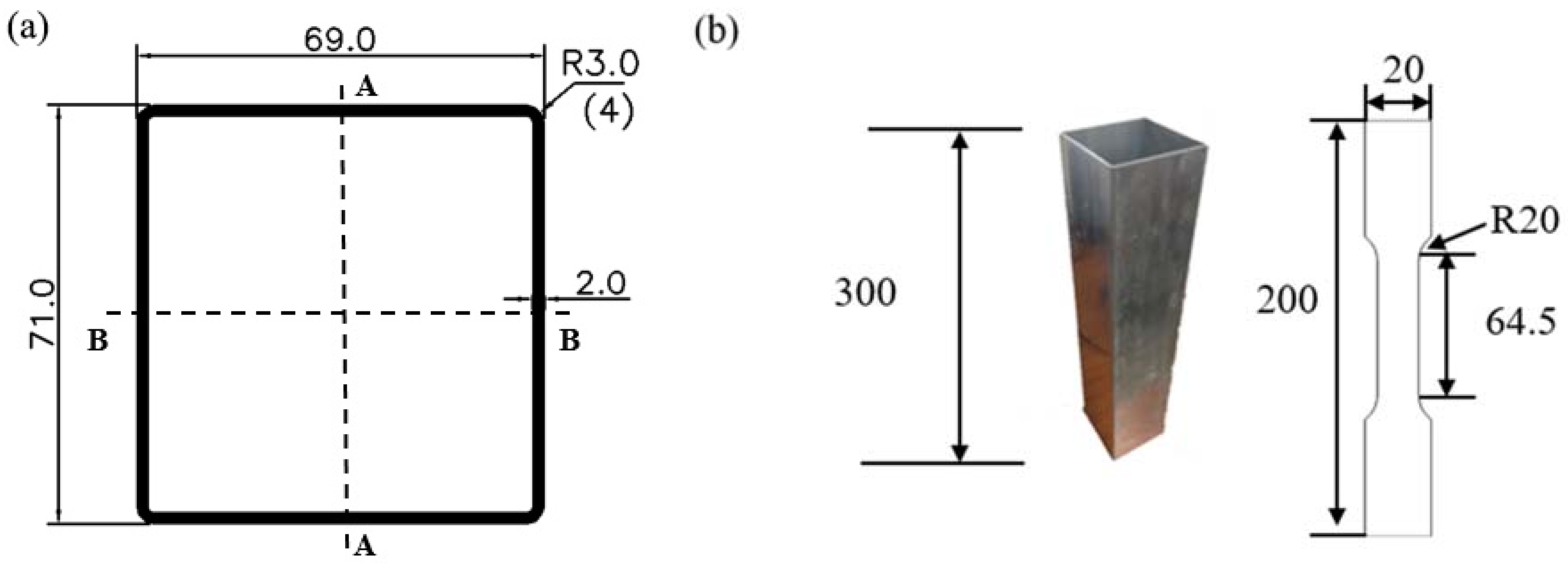
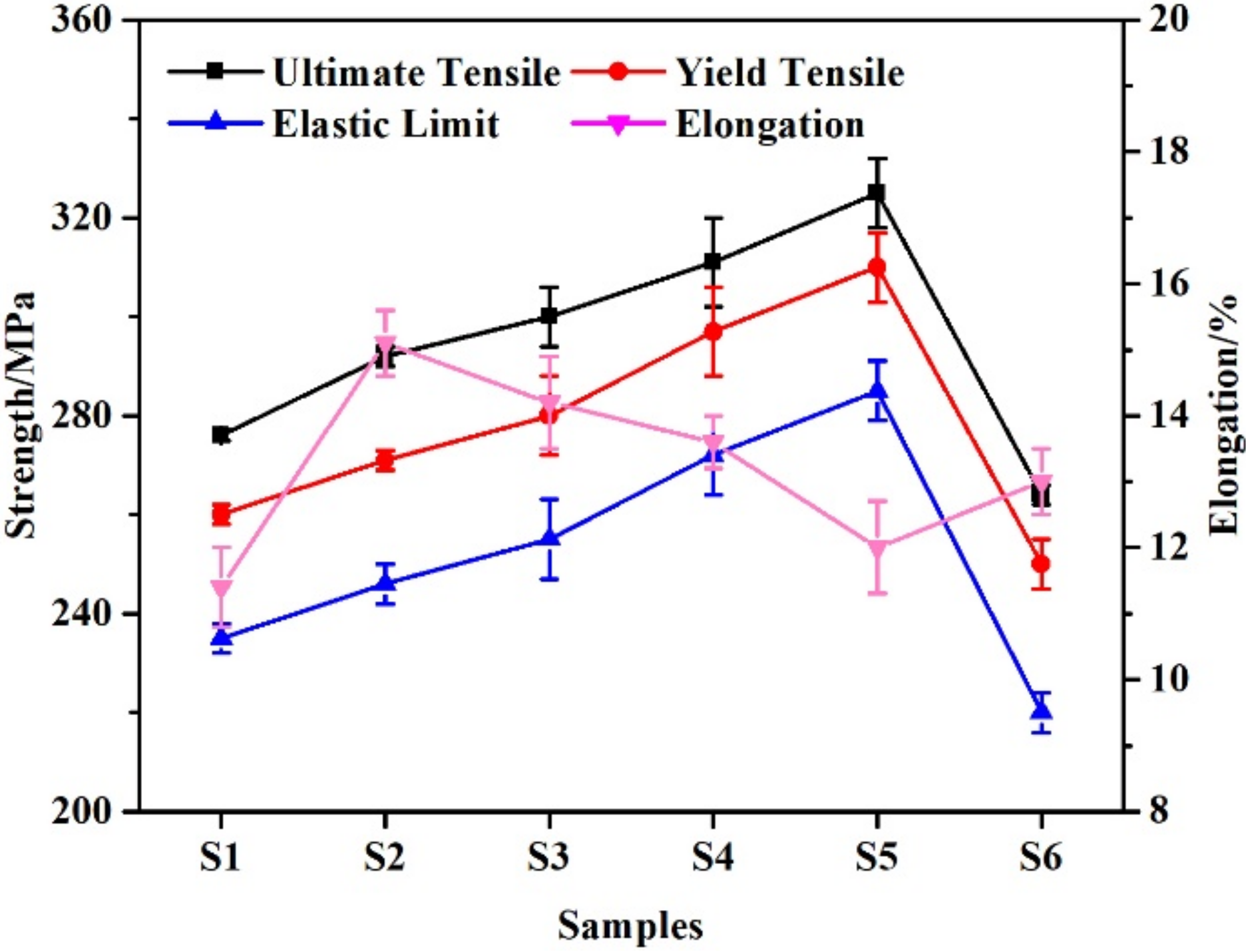
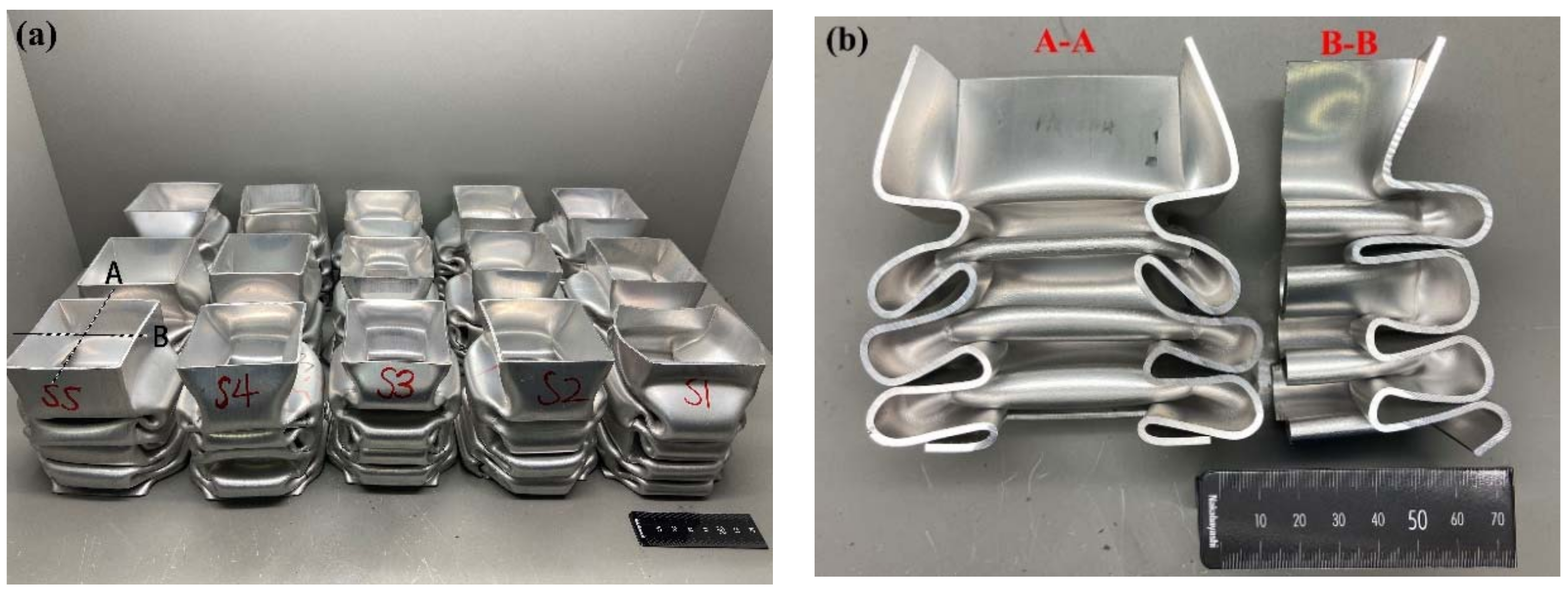



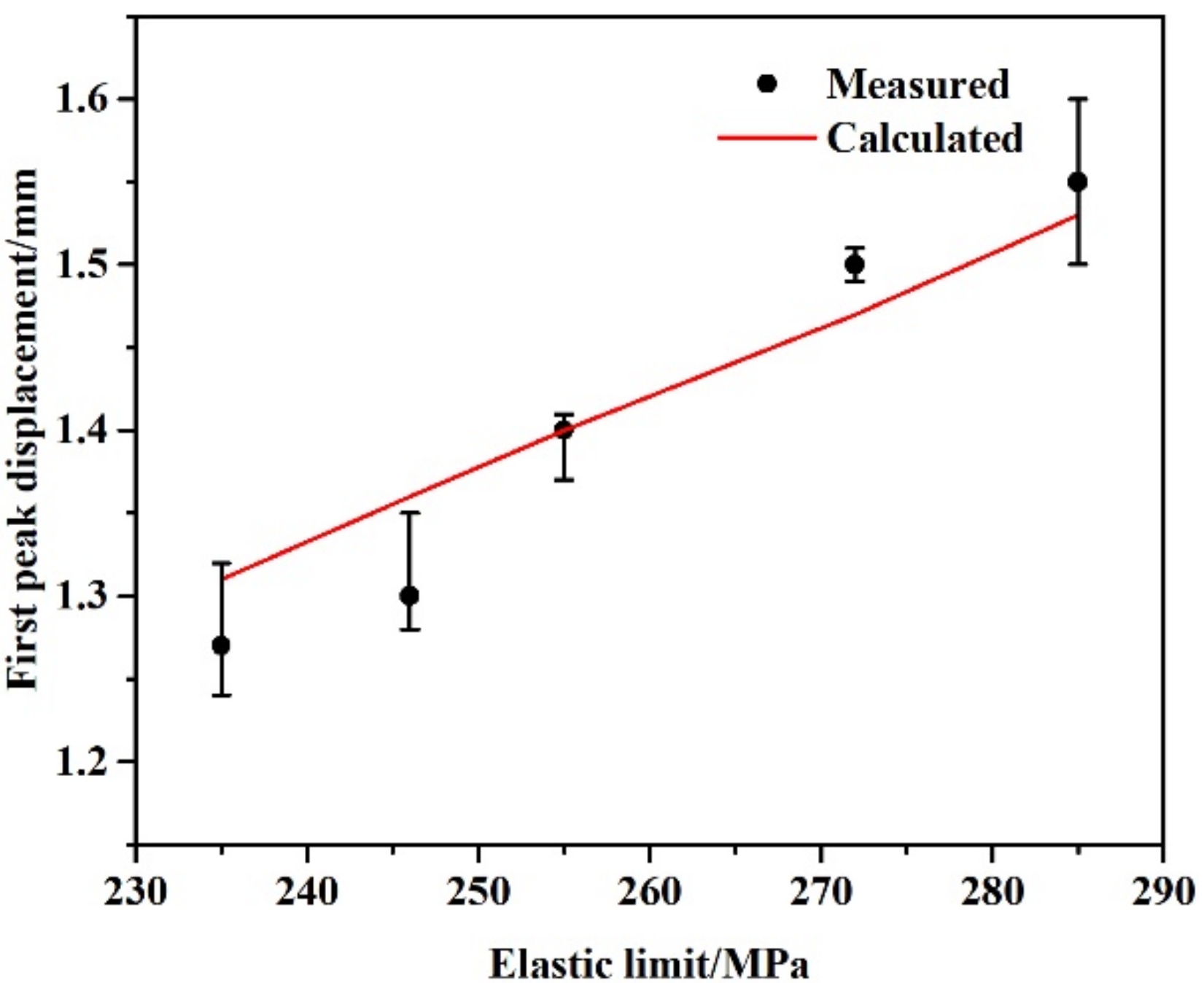



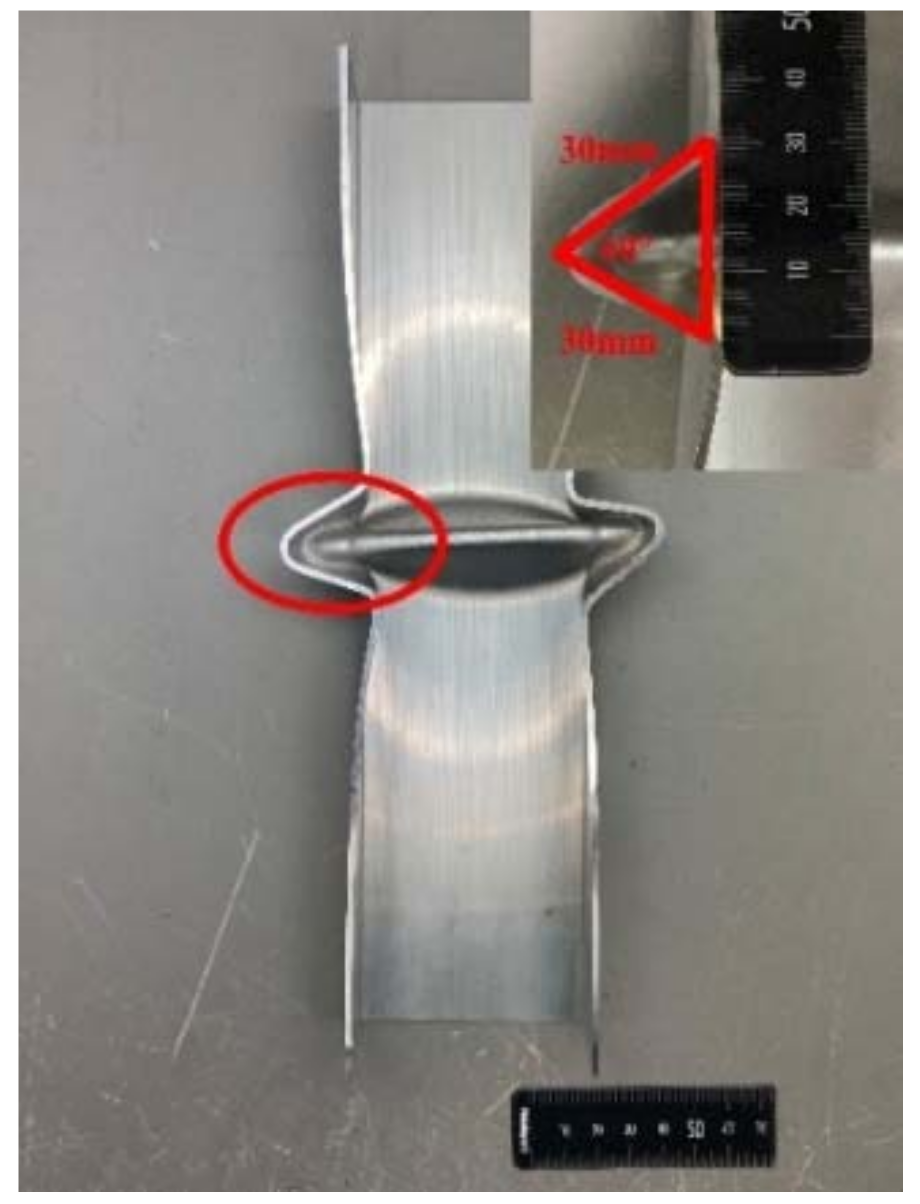
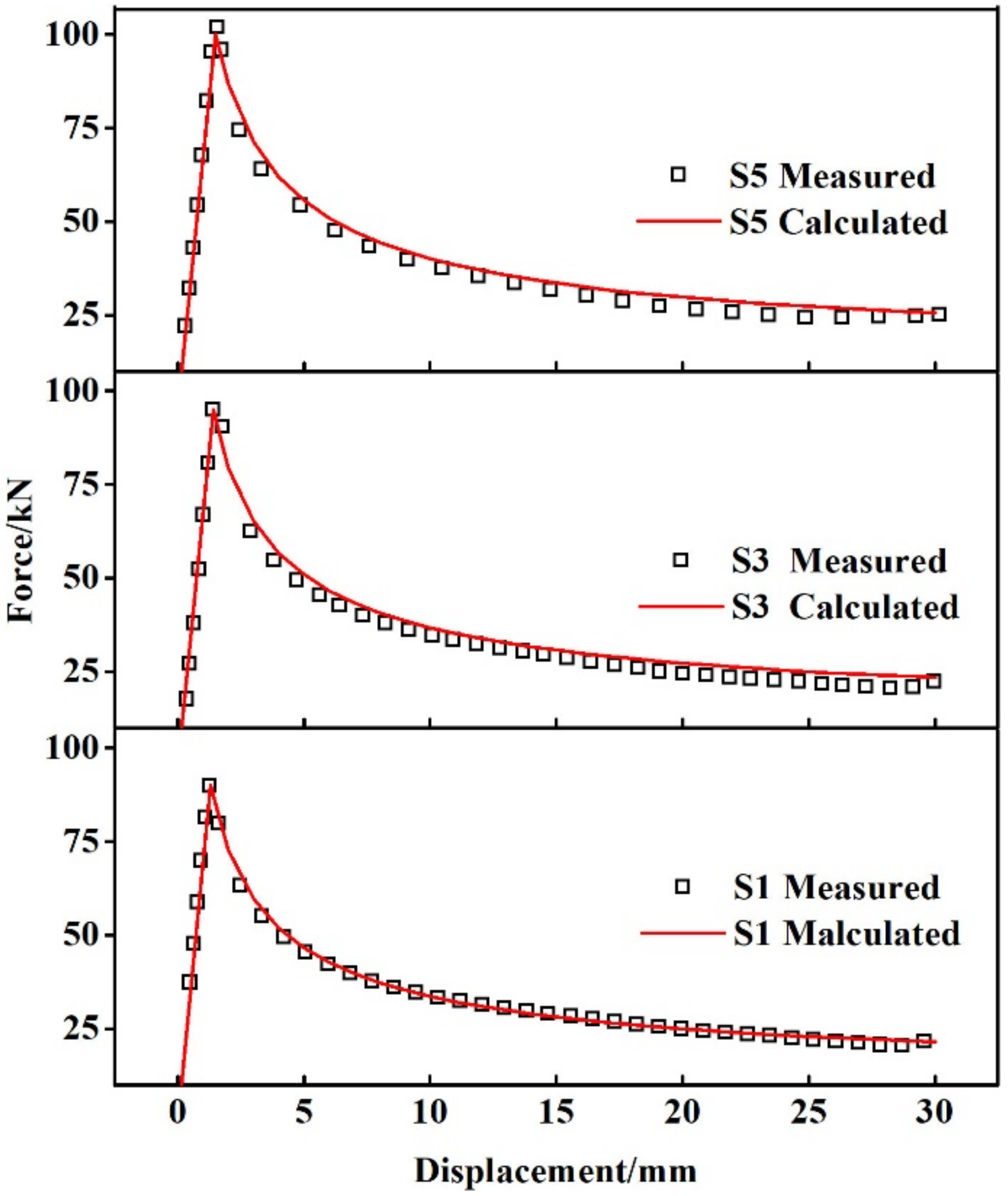
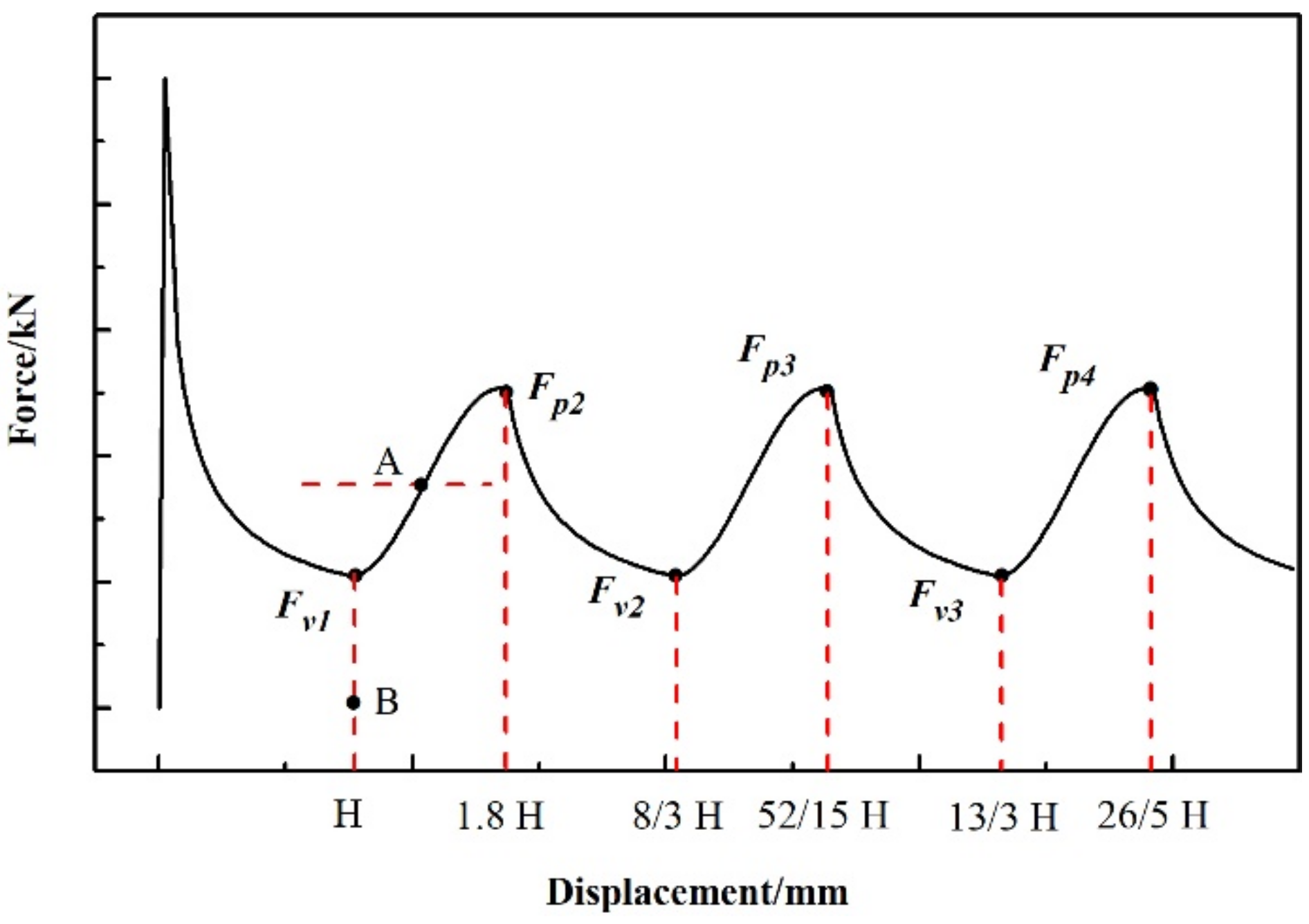



| Element | Si | Fe | Cu | Mn | Mg | Ti | Al |
|---|---|---|---|---|---|---|---|
| KHC63 | 0.55 | 0.18 | 0.16 | 0.13 | 0.9 | 0.067 | Remainder |
| Sample Number | Aging Treatment |
|---|---|
| S1 | 220 °C × 6 h |
| S2 | 175 °C × 10 h |
| S3 | 175 °C × 16 h |
| S4 | 205 °C × 6 h |
| S5 | 175 °C × 10 h °C + 205 °C × 6 h |
| S6 | 220 °C × 8 h |
Publisher’s Note: MDPI stays neutral with regard to jurisdictional claims in published maps and institutional affiliations. |
© 2020 by the authors. Licensee MDPI, Basel, Switzerland. This article is an open access article distributed under the terms and conditions of the Creative Commons Attribution (CC BY) license (http://creativecommons.org/licenses/by/4.0/).
Share and Cite
Guo, H.; Deng, Y.; Fan, S.; Pan, R. Calculation and Prediction of Crushing Process of Al–Mg–Si Alloy Thin-Walled Components. Metals 2021, 11, 28. https://doi.org/10.3390/met11010028
Guo H, Deng Y, Fan S, Pan R. Calculation and Prediction of Crushing Process of Al–Mg–Si Alloy Thin-Walled Components. Metals. 2021; 11(1):28. https://doi.org/10.3390/met11010028
Chicago/Turabian StyleGuo, Hui, Yunlai Deng, Shitong Fan, and Renjie Pan. 2021. "Calculation and Prediction of Crushing Process of Al–Mg–Si Alloy Thin-Walled Components" Metals 11, no. 1: 28. https://doi.org/10.3390/met11010028
APA StyleGuo, H., Deng, Y., Fan, S., & Pan, R. (2021). Calculation and Prediction of Crushing Process of Al–Mg–Si Alloy Thin-Walled Components. Metals, 11(1), 28. https://doi.org/10.3390/met11010028





